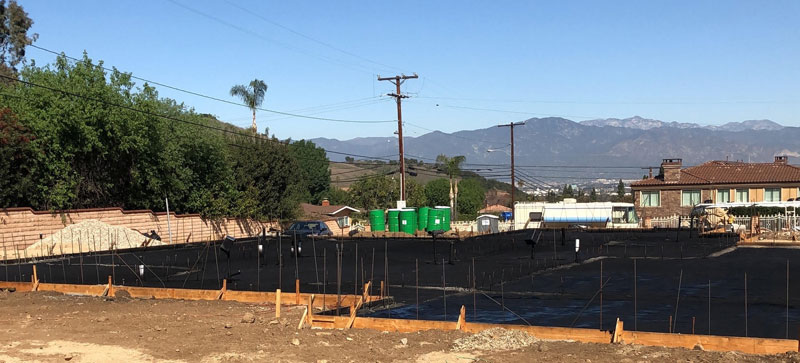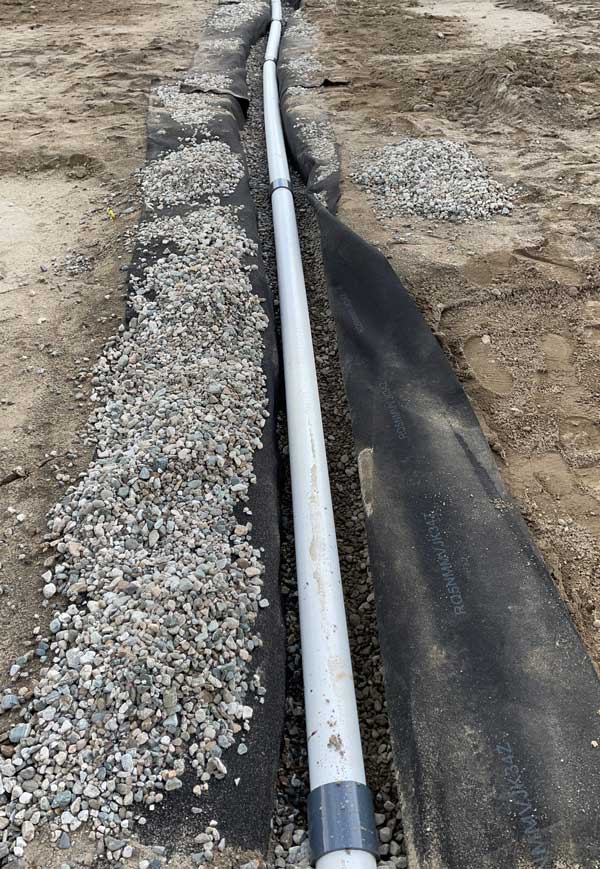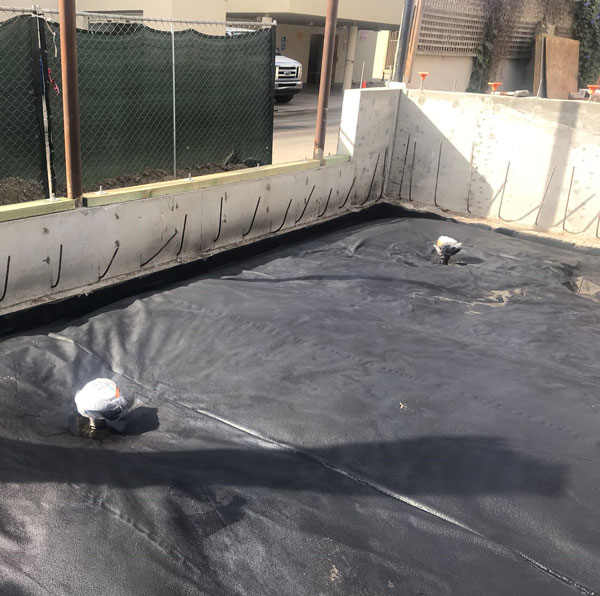Methane Mitigation Systems include a series of redundant design approaches. To prevent the migration of gas vapors into the interior space of a structure. One of the main components of Methane Vapor Systems is the Methane Gas Vapor Barrier. This Methane Membrane is installed below the foundation of a system and acts as a seal for the concrete slab, which requires a Vapor Mitigation Contractor.
Why can’t my concrete slab prevent methane vapor migration?
Any vapor, depending on the size of the molecule, can diffuse through a surface. Diffusion is the movement of a substance through a character, typically driven by pressure and concentration gradients. A relatable example would be a helium balloon deflating over some time. The helium pressure and concentration are significantly higher than in the atmosphere, and the size of helium molecules is tiny. So, naturally, the helium wants to migrate through the balloon’s surface to reach the atmosphere. Over time, helium finds its way through the tiny crevasses of the balloon material. Ultimately, most helium diffuses, resulting in balloon deflation.
This phenomenon goes by the term Mass Diffusion. The same concept of mass diffusion of helium through a balloon is applied to Methane Gas through a concrete slab, besides the fact that concrete slabs can have cracks which are open pathways for gas vapors. Over time, the methane gas can diffuse through the concrete slab introducing explosion risks inside a structure.
Methane Mitigation Designers implement a material installed beneath a structure’s foundation.
This material is designed to reduce the diffusion of methane gas vapor. The reduction of scattering is driven by several variables, including Methane Gas Vapor Pressure (Industry standard Measures in Inches of Water), Methane Gas Construction, typically measured in parts per million (PPMV), Methane Barrier Material, and Vapor Barrier Thickness.
Referring to the helium balloon example, if the balloon membrane was thicker, it may reduce the diffusion rate accordingly. Also, if a different material was in use, it may reduce the helium Gas Migration. Similarly, Methane Barriers design is to distinctly minimize the diffusion rates of methane gas. The thickness of the barrier can change accordingly for projects and anticipated risks. This proves that not all methane barriers have the same diffusion prevention capabilities.
Vapor Gas Migration Engineering Comparison
Methane Mitigation aligns with the study of heat transfer and the thermal sciences. The term used to measure to diffusion capability of a material is termed the coefficient of Mass diffusion. Mass Diffusion values can be calculated using Fick’s Law. Which has a close analysis methodology to Fourier’s Law of Conduction for Heat Transfer.
What values of mass diffusion are appropriate for use? The Los Angeles building and safety and the DTSC have established safety values for Mass Diffusion through Methane Barrier. All approved Methane Barriers need to meet the standards to ensure they can sufficiently prevent methane diffusion at a reasonable rate. This is why a Vapor Mitigation Contractor is required.
This ideology and theory are only appropriate if you have a perfectly sealed foundation to the sub-surface. For this reason, it is essential to emphasize that a licensed Methane Mitigation Contractor must install vapor mitigation systems to ensure the foundation’s seal is perfect. Any loose ends, holes, or obstructions can create a path for methane to intrude into a building without the protection of the Methane Barrier.
Sub Slab Depressurization System
The sub-slab vent system is another redundant methane mitigation design approach which implements in Methane Mitigation Construction. As previously noted, Mass Diffusion is not only a function of concentration differential but also a function of pressure differential. The larger the pressure and concentration gradients, the higher the mass diffusion. This is where the sub-slab vent system comes to help. Implementing a sub-slab vent system allows the depressurization of the subfloor to ensure that the pressure differentials are minimal; this reduces the mass diffusion and also introduces relief in the case of an obstruction on the membrane.
The Sub slab vent system allows the methane gas to route through vents rather than through the structure. Methane vent pipes consist of perforated pipe along with a gravel blanket below the surface of a building. These systems design in mind by a licensed professional engineer with experience in designing methane depressurization vent systems.
Vapor Mitigation Design
The details utilized prepared on the Vapor Mitigation Design is of utmost importance; often time consultants use standard components that manufacturers or city officials prepare. This poor practice leads to issues during construction for lacking details and direction during the Vapor Mitigation Construction phase.



